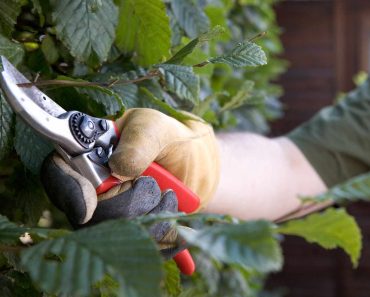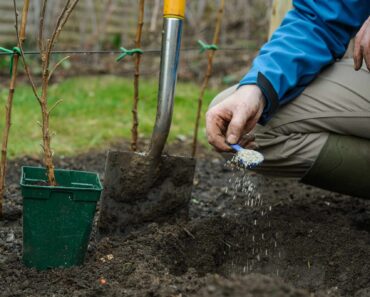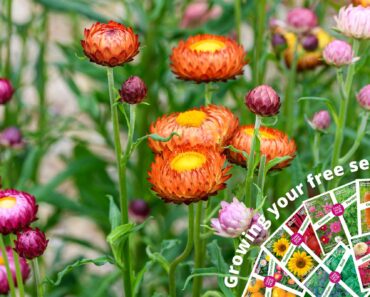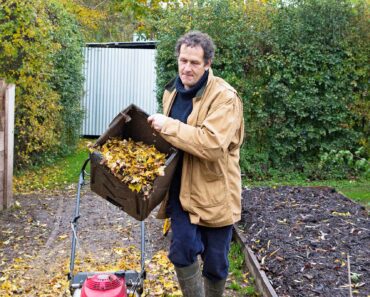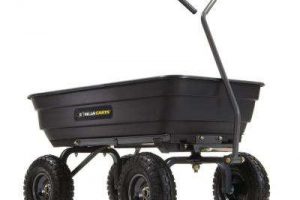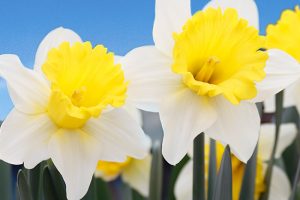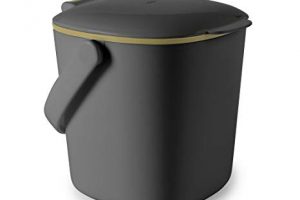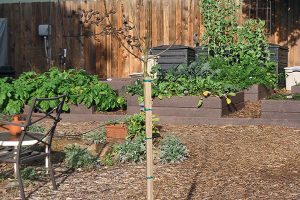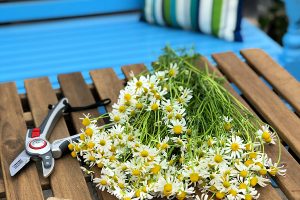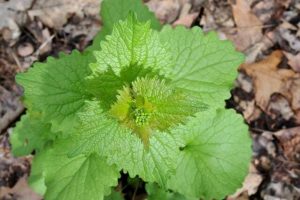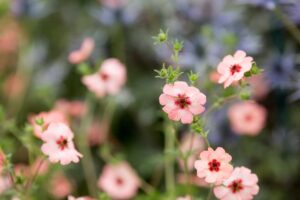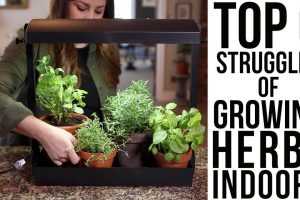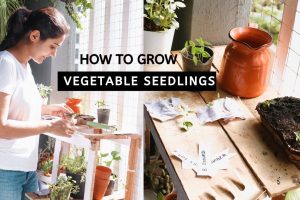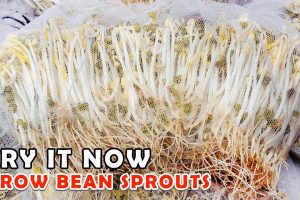
Lavender is a Mediterranean evergreen shrub, grown for its fragrant leaves and bee-friendly flowers. There are hardy, half-hardy and tender species of lavender to choose from.
Lavenders work in a variety of situations, from wildlife gardens to cottage gardens and even formal gardens, such as planted beneath shrub roses or used as a low-growing lavender hedge. Many lavenders thrive in pots.
Choosing lavenders to grow
The type of lavender you grow will depend on personal choice, including flower colour and shape, plus the shade and fragrance of the foliage (some lavenders have silvery grey leaves, while others are more green). However, there are some pointers to be mindful of when choosing which lavender to grow in your garden. Firstly, it’s worth noting that English lavender, Lavandula angustifolia, is more hardy and long-lived than French and Spanish lavenders, Lavandula dentata and Lavandula stoechas. It’s thought that English lavender is also more attractive to bees than French or Spanish lavender.
Traditional English lavender varieties include ‘Hidcote’ and Lavandula ‘Munstead’. These are undeniably lovely and rightly popular, but have you considered intermediate lavenders? Sometimes called ‘lavendins’, these hybrid lavenders have Lavandula angustifolia and Lavandula latifolia as their parents. Lavendin lavenders are more robust than other lavenders and therefore more tolerant of wetter soils and colder winters. They’re larger in habit than English lavenders and flower for a longer period, providing more flowers for you to enjoy and more pollen and nectar for bees. Popular hybrid lavenders, or lavendins, include Lavandula x intermedia ‘Edelweiss’ and Lavandula x intermedia ‘Grosso’.
How to grow lavender
Grow lavender in full sun in well-drained soil. Half hardy and tender lavenders, such as Lavendula stoechas, should be grown in a sheltered spot. Cut back after flowering to prevent stems becoming woody.
More on growing lavender:
- How to take lavender cuttings
- How to make a lavender hedge
- How to make lavender oil
- How to make a lavender bath bag
- How to dry lavender
Growing lavender: jump links
- Growing lavender
- Lavender plant care
- Propagating lavender
- Growing lavender: pests and problem-solving
- Where to buy lavender
- Best lavenders to grow
Where to grow lavender

Lavenders thrive in an open site in full sun in a well-drained, neutral to alkaline soil (got acid soil? Try French lavender, Lavandula stoechas, instead). They cope well with drought conditions and may suffer in wet, heavy soils, particularly over winter.
Half-hardy and tender lavenders, such as Lavandula stoechas, are best grown in pots so that they can be moved to a light, airy frost-free spot for winter.
How to plant lavender

The best time to plant tender lavender is in spring, from March through to May. If you have heavy soil, improve drainage by adding horticultural grit to the planting hole before planting. Planting on a slight mound can also help prevent water-logging. Plant lavender at the same depth it was in its pot. Add a sprinkling of bonemeal to the planting hole, place the plant in the hole, backfill and firm in. Water well.
When planting lavender in pots, choose terracotta pots with drainage holes. Fill with a John Innes no. 2 or 3 and mix in some horticultural grit, for drainage. Pots should be placed in a sunny spot away from overhanging trees and shrubs.
Where to buy lavender online
How to care for lavender plants
Hardy lavenders (Lavandula angustifolia and Lavandula x intermedia types) can cope with temperatures down to about -15°C, and can therefore be left in the garden all year round. Prune after flowering, typically in August. Cut back quite hard but don’t cut into old wood, as this can reduce flowering potential the following year. Be careful not to remove green shoots as this can kill the plant.
Half-hardy lavenders, such as Lavandula stoechas, flower for a long season but may not survive winter. Prune after their first flush of flowers have faded but avoid pruning any later than early September.
If growing the more tender lavenders, such as Lavandula denata, deadhead and prune only if the plants become scruffy.
In this short video guide, Monty Don demonstrates how to cut back lavender after flowering, to maintain a neat, compact shape and prevent it becoming leggy and unkempt:
How long does lavender live?
Lavenders are not long-lived plants. Expect tender varieties to live for about five years. If pruned correctly, hardy types can live for about 15 years (as many as 20 years, in some cases).

How to take lavender cuttings

Take semi-ripe lavender cuttings in late summer. Remove non-flowering shoots, about 10cm long, with a woody base and a tip with new growth. Pull off some of the lower leaves. Fill plastic pots with peat-free multi-purpose compost, water and then push the cuttings into the compost. About 1cm should be below the soil. Cover pots with a clear plastic bag and place in a light and airy place. A greenhouse is ideal.
Find out how to boost your stock of lavender plants, in Monty‘s video guide to taking cuttings of French lavender, Lavendula stoechas:
Transcript
Although the herbs are now in their heyday, it is worth thinking about next year already because if we have a winter like the last couple, we’re bound to lose herbs in the process, particularly the Mediterranean ones like rosemary and sage and lavender. And I’ve got some lavender here. This is Lavandula stoechas, which is really not very hardy at all, and although it’s in pots and it can be taken in, it’s worth taking steps now to ensure I have plenty of backup. The best way to do that is from cuttings.
What I’m looking for are nice, straight, healthy stems without any flower buds. Now, if I took just the soft ends, that would root very readily, but it would also die very fast. However, if I take some older growth, wood that’s grown this year but has had a few months to harden off, it will die off much slower and therefore have more time to produce roots. So that’s what I’m looking for.
So I’m going to cut back to there and then I’ll take another couple from this plant. Right, now the crucial thing, if you’re taking any cutting at all, is have a polythene bag in your pocket and put them straight in, because essentially those are dying. And by sealing them in a polythene bag, we’re delaying their death, which buys us time to prepare them so they can make roots.
As it is, I’m going to do that right now. Right, this is just normal potting compost and I’ve got some extra grit which I’m going to add into it. You could take the cuttings in pure grit if you had to, so don’t stint on it.
Wherever you have a heel, which is a slither that attaches to another stem, you tend to get much better rooting, so it’s a good idea to keep that. Now where we have a long cutting like this without a heel, I’m going to cut that back. You see here, that there are leaves coming from there, so if I just cut across there, sharp knife, then take a few more leaves out.
I always used to make my cuttings by just sticking them into the compost. But actually, recently, I’ve been putting them between the pot and the compost and they take much better. You just slide it down the edge of the pot like that and the reason for that is, because they’re kept a bit warmer and the drainage is a bit sharper.
Now Mediterranean shrubs don’t want to be too wet, unlike some cuttings which need to be kept permanently wet. These are fine if you put them in a bright but not glaringly bright place, a sort of shade for half the day is fine and mist them once, twice, three times a day, if you remember. But if they turn brown at the tips, that means they are too wet, so dry them off a bit. And then when you see fresh new growth, you’ll know they’ve got a root system and you can pot them up individually and then keep them over winter. They won’t grow a lot between now and next spring, but once next spring comes, they’ll grow away strongly and you’ll have half a dozen healthy new plants.
Growing lavender: problem solving

Lavender can be become very leggy and bear few flowers. The reason for this is lack of or poor pruning. Many gardeners just deadhead hardy types which leads to leggy plants and few flowers. Looked after in this way the plant will be very short lived.
To rejuvenate a woody plant, prune in mid-August to just above a green shoot and hope for the best. If new shoots don’t appear within the next month you might be better off starting again.
Advice on buying lavender
- Check the height, spread and hardiness of the lavender before buying it. They vary in size and some are much hardier than others
- Look carefully at the shape and colour of the lavender flowers. There are lots of subtle differences to choose from, which could make the difference to your display
- Check all lavender plants for damage, disease and signs of pests before planting
Where to buy lavender online
Great lavenders to grow
Lavandula angustifolia ‘Hidcote’

‘Hidcote’ is one of the best known of all lavender varieties, for good reason. It’s a compact variety of English lavender with mid-purple flowers and is ideal for planting in borders or as dwarf hedging.
Lavandula angustifolia ‘Little Lottie’

As the name suggests, ‘Little Lottie’ is dwarf variety of English lavender, growing to around 30cm in height. It has pale, purple-pink flowers held above green-grey foliage. Find out how to use this dwarf variety in a lavender and thyme hanging basket.
Lavandula angustifolia ‘Lady Anne’

‘Lady Ann’ is a compact variety of English lavender, growing to around 45cm in height. The flowers are pale pink and have a slight fragrance. Good for combining with purple-flowered lavenders.
Lavandula angustifolia ‘Lullaby Blue’

Lavandula angustifolia ‘Lullaby Blue’ has rich, purple-blue flowers. Reaching around 60cm in height, it’s a good choice if you’re after a more substantial lavender hedge. Like all lavenders, it’s great for pollinating insects.
Lavandula stoechas ‘Willow Vale’

‘Willow Vale’ is a vigorous variety of French lavender with gorgeous spikes of purple flowers. Like most lavenders, it has large and distinctive bracts. Deadhead the flowers once they’re past their best.
Lavandula stoechas ‘Fathead’

‘Fathead’ is a vigorous variety with a good scent, so it’s good for drying. French lavenders are best grown in sunny, sheltered areas. Try growing lavender as part of a nectar-rich container display.
Lavandula x intermedia ‘Edelweiss’

Like all Lavandula x intermedia hybrids, ‘Edelweiss’ is a larger, more robust variety, with broader leaves and longer flower stalks. It has pure white blooms and makes an excellent cut flower.
Lavandula x intermedia ‘Gros Bleu’

‘Gros Bleu’ is a large, attractively branched variety with pale-purple blooms. A lovely choice for borders, as a hedge and for cut flowers. Discover more perennials to grow for cut flowers.
Lavandula x intermedia ‘Grosso’

‘Grosso’ is considered by many to have the best scent of all lavenders and is often grown for use as a cut flower. Looks good planted with rosemary and thyme, which enjoy similar growing conditions.
Lavandula x christiana

Lavandula x christiana is one of the rarer lavender hybrids. It’s hardy and has beautiful feathery foliage, similar to that of some artemisias, and tall purple flower spikes.

